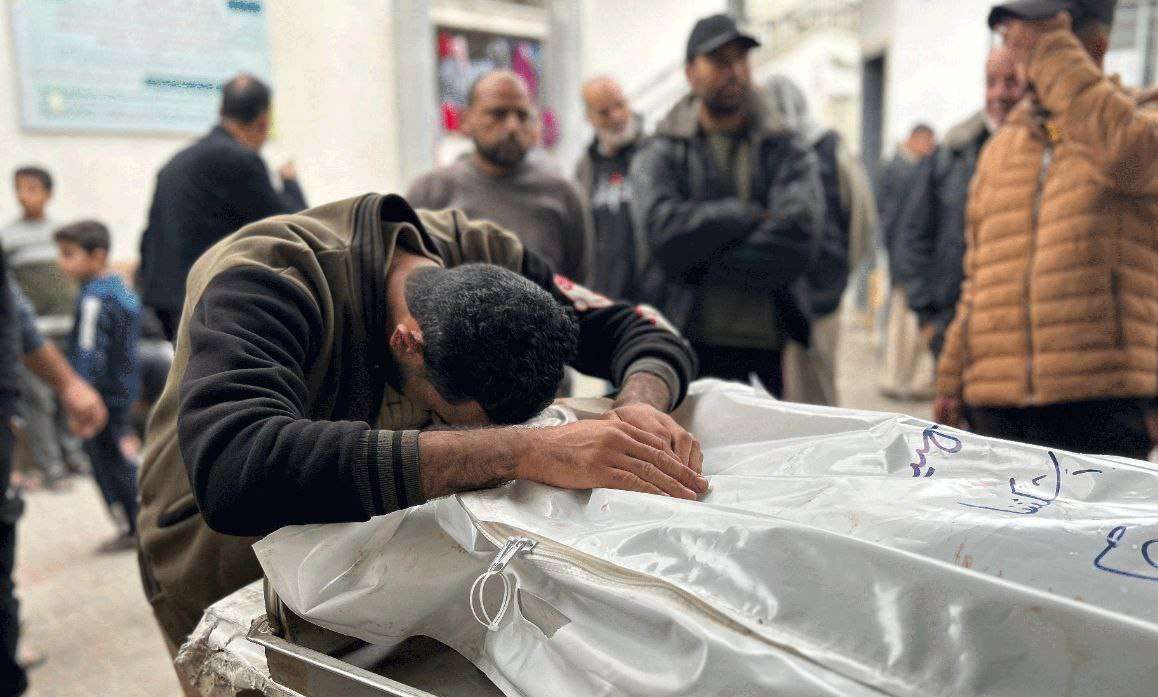The Lancet stressed the “need to record the scale and nature of suffering” in the Gaza Strip, saying “it is also a legal requirement.” It noted that the date will be crucial for the post-war recovery as well as “restoring infrastructure, and planning humanitarian aid.”
The total death toll in the Gaza Strip, including indirect deaths, could reach 186,000, representing 8 percent of the besieged enclave’s population, amid Israel’s ongoing onslaught.
The alarming findings were revealed on Friday in a report by The Lancet, a leading medical journal, that detailed the struggle of the Gaza Strip’s collapsed health sector to count those killed by Israel throughout the past nine months.
Collecting accurate death toll data has become a significant challenge for the Gaza Health Ministry amid Israel’s ongoing war, resulting in an underestimated figure than the one reported of more than 38,000.
The medical entity warned that the indirect deaths from Israel’s, widely referred to as, genocidal war on the Gaza Strip are also expected to be much more significant due to the major damage on the ground.
“Even if the conflict ends immediately, there will continue to be many indirect deaths in the coming months and years from causes such as reproductive, communicable, and non-communicable diseases,” the report said.
The local health authorities have been relying on media sources and first responders, which in turn resulted in less detailed figures that are feared to be significantly higher than the ones being reported.
As of May 10, 30 percent of 35,091 deaths were unidentified with more than 10,000 bodies believed to be buried under the rubble, the report said, echoing previous ones carried out by global bodies including the United Nations.
“The Ministry has had to augment its usual reporting, based on people dying in its hospitals or brought in dead, with information from reliable media sources and first responders. This change has inevitably degraded the detailed data recorded previously,” The Lancet said.
Offering a stark comparison with “recent conflicts”, The Lancet reported that “indirect deaths would range from three to 15 times the number of direct deaths.”
“Applying a conservative estimate of four indirect deaths per one direct death to the 37, 396 deaths reported, it is not implausible to estimate that up to 186,000 or even more deaths could be attributable to the current conflict in Gaza,” it noted.
On February 7, when the toll stood at 28,000, a report by London-based charity Action on Armed Violence estimated that there would be between 58,260 and 85,750 deaths by August 6 without a ceasefire.
The Lancet stressed the “need to record the scale and nature of suffering” in the Gaza Strip, saying “it is also a legal requirement.” It noted that the date will be crucial for the post-war recovery as well as “restoring infrastructure, and planning humanitarian aid.”
“The interim measures set out by the International Court of Justice in January, 2024, require Israel to ‘take effective measures to prevent the destruction and ensure the preservation of evidence related to allegations of acts within the scope of … the Genocide Convention’,” the medical entity added.
Israel has brushed off the ICJ’s provisions and persisted in its war on the Gaza Strip for nine months, killing at least 38,193 people while wounding 87,903 others.
The coastal enclave’s medical sector has been one of Israel’s primary targets throughout the war. According to the UN, only 15 out of Gaza’s 36 hospitals are partially functional and can hardly be accessed due to damage on the ground, the absence of fuel and lack of security.
On Sunday, medical staff at the Baptist Hospital in Gaza City were forced to evacuate the wounded following an order by the Israeli occupation forces.
According to the UN, the war has destroyed more than 80 percent of the Strip’s commercial facilities and more than 60 percent of residential buildings while displacing 1.9 million out of the 2.1 million population.
The dire humanitarian catastrophe has led to the outbreak of diseases, with at least 923,000 cases of acute respiratory infections.
At least 41 people in the Gaza Strip have also died as a result of malnutrition amid an extreme shortage of basic food resources due to Israel’s closure of the vital Rafah Crossing after invading it on May 6.







